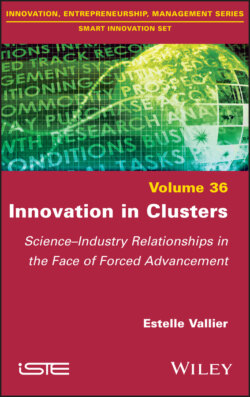Читать книгу Innovation in Clusters - Estelle Vallier - Страница 23
1.1.3. The rise of districts: the end of the Fordist enterprise?
ОглавлениеSome authors see the sign of a more general economic change in the organization of industrial districts, in which Fordist mass production gives way to the industrial development of flexible specialization. This observation is mainly defended by regulationist economists (Boyer, Aglietta, Saillard, Coriat, etc.), who consider the accumulation regime concept as a tendency inherent to the capitalist mode of production, and which corresponds to regularities ensuring a general and relatively coherent progression of capital accumulation. These regularities operate within institutions that govern, among other things, competition, money, wage relations, etc. Depending on the place and the period, these institutional configurations may change. The Fordist mode of regulation articulated macroeconomic regularities on an international scale, while at the same time being subject to national compromises (Boyer and Saillard 2002). During the intense period of Fordism, the national scale was considered the relevant level of accumulation.
However, this economic and social regulation, which was being carried out within large enterprises, is no longer appropriate. Indeed, the crisis of Fordism is reflected in a crisis of territory at the level of the nation state (caused by a triple movement of tertiarization, deregulation and globalization) and a crisis of legitimacy of the welfare state with the emergence of mass unemployment (Carré and Levratto 2011, p. 360). In this context of capital internationalization and the crisis of the state, institutional arrangements are regional (EU, NAFTA) and international (WTO, for example), rather than solely national. In France, some authors see a disappearance of the Colbertist state (Mustar and Laredo 2002) and the emergence of new public actors, such as Europe and local authorities. As a result, the new post-Fordist regulations would be posed jointly in terms of sector and territory (Laurent and Du Tertre 2008). This approach is in line with theories that consider that a new geography of flexible accumulation is emerging in reaction to the Fordist mode of accumulation (Storper and Scott 1990). In a seminal work, Michael Piore and Charles Sabel (1986) develop the concept of flexible specialization as an alternative model to Fordist mass production, based on the emergence of local industrial models, notably the Italian districts (Hirst and Zeitlin 1992). Industrialization with flexible specialization is understood to be:
A form of production based on individual initiatives or on those of small enterprises that will work together to build, through rather complex and informal transactional systems, products intended for the market (consumer products or production components) […]. This specialization in a segment favors flexibility in the production of the components and elements of the final product, which in turn leads to greater flexibility in the overall network of enterprises, which is then likely to offer a wide range of products to the market (Durand 1991, p. 48).
These SMEs, each specialized in a different segment of production, constitute a system that adapts to technological developments. For some authors, this specialization comes at a time of crisis for the mass consumption model: the rise of individualism leads the consumer to no longer want uniform goods (Capecchi et al. 1987). The weakening of these standardized goods markets has disrupted the large Fordist enterprises, the symbol of which being the automobile industry. Slow growth marked by weak demand would have determined the “shift of centrality” from large industry to small production units considered more flexible and more responsive to demand surges (Vercellone 2003). On the other hand, others consider that it is more a question of an entrepreneurial thrust that sought to express itself outside the conditions of domination of big business. Unable to compete on the basis of production costs, new production models were invented, based on product diversification (Durand 1991). Some observers agree that this post-Fordist bifurcation is embodied in the shift from an economy of quantity to an economy of variety, under the pressure of the relaxing of borders and increased competition (Veltz 1996). Hatchuel refers to this as a “Taylorism of variety” (Hatchuel et al. 2002, p. 32). Moreover, the flexible specialization model combines the advantages of the large enterprise (economies of scale) and those of the small business (productive flexibility), allowing for a better capacity for innovation (Garofoli 1992).
Literature on the district, and its variants, analyzes spatial concentrations of businesses that have formed on their own, based on family or neighborhood ties, or even with the aim of integrating the production chain of a territory. In this sense, Bagnasco evokes a “spontaneous social capital” specific to the Italian district1, that is, “accumulated over the course of history within networks that define local society” (Novarina 2012, p. 21). He contrasts it with the “created social capital” that public authorities try to reproduce. Indeed, while the models we have just seen are the result of local initiatives, the spatial concentrations intended to rapidly bring science and industry together are the result of public policies, whether they be French technopoles or American science parks.
